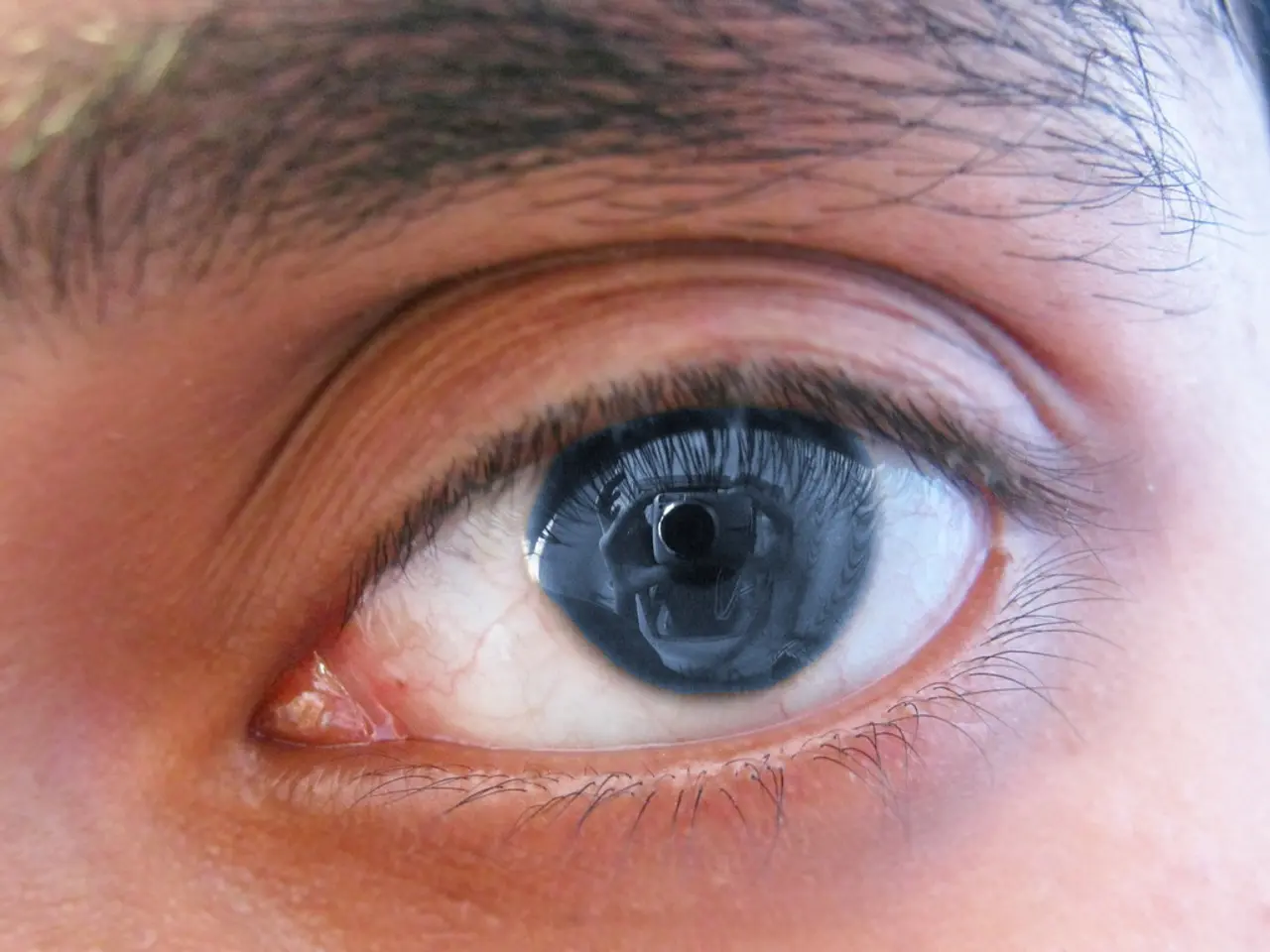Eye Swelling and White Discoloration: Causes and Remedies
Conjunctivitis, often referred to as pink eye, is a common inflammation of the conjunctiva — the clear membrane covering the eye. This condition can be caused by various factors, including viruses, bacteria, allergens, chemicals, contact lens wear, and certain eye diseases.
Causes
Viral Conjunctivitis
Viral conjunctivitis is the most common form and is often contagious. It usually resolves within one to two weeks without treatment [1][2][3].
Bacterial Conjunctivitis
Bacterial conjunctivitis typically affects children more and presents with significant redness and thick green, yellow, or white discharge. Antibiotics can accelerate recovery [1][2][4].
Allergic Conjunctivitis
Allergic conjunctivitis is a non-infectious cause triggered by allergens like pollen, pet dander, or dust. Symptoms include severe itchiness, watery discharge, and often both eyes involved [1][3][4].
Irritant Conjunctivitis
Irritants like chemical exposure, air pollution, or some eye drops can also cause conjunctival inflammation [1][4].
Symptoms
Symptoms of conjunctivitis include redness or pinkness in the white of one or both eyes, watery or sticky discharge (color and quantity may indicate viral versus bacterial), eye itchiness or burning sensation, grittiness or feeling like there is something in the eye, swollen eyelids, sensitivity to light, and temporary blurred vision due to tearing or discharge [1][2][3][4].
Treatments
Viral Conjunctivitis
Viral conjunctivitis usually resolves on its own in 7–10 days. Symptomatic relief can be provided by warm compresses and good hygiene; antibiotics are ineffective [2][4].
Bacterial Conjunctivitis
Antibiotic eye drops or ointments such as erythromycin ointment, polymyxin B/trimethoprim drops (Polytrim), and ofloxacin drops (Ocuflox) can speed recovery. Treatment is typically for several days, and symptoms often improve quickly after initiation [2][4].
Allergic Conjunctivitis
Antihistamines (oral or eye drops) and anti-inflammatory eye drops help reduce allergic inflammation and symptoms. Over-the-counter antihistamines such as loratadine or diphenhydramine can also be used [1][4].
Irritant Conjunctivitis
Avoiding the offending agent is key, and symptoms usually improve once the irritant is removed. Supportive care is advised [1][4].
Accurate diagnosis by an eye care professional is important to differentiate conjunctivitis from other eye conditions with similar symptoms and to determine appropriate treatment [3].
If untreated, bacterial conjunctivitis can lead to complications, although most cases resolve without permanent damage [3]. Anyone who accidentally splashes a harsh chemical in their eye should flush the eye extensively with water and then contact a doctor.
Graves' disease, an autoimmune disorder, can cause conjunctivitis. A person with conjunctivitis should avoid using eye drops to reduce redness, such as tetrahydrozoline (Visine), as they could cause discomfort.
Thyroid eye disease can also cause swelling of the conjunctiva. Other infections can cause conjunctivitis. People who have other allergic conditions, such as asthma or hay fever, commonly develop allergic conjunctivitis.
If wearing contact lenses is causing a person to develop conjunctivitis, their optometrist may suggest switching to a different type of lens, using an alternative disinfectant solution, or a different vision option.
- Psoriatic disease, a type of autoimmune disease, has been found to have a possible predictive association with conjunctivitis, suggesting a link between eye health and overall health-and-wellness.
- Besides HIV, which is known to affect the immune system and potentially lead to various health complications, there are multiple other medical-conditions that can cause conjunctivitis.
- Depression and other mental health issues, such as bipolar disorder, may have a prevalence among individuals who suffer from chronic eye diseases like psoriasis in the eye.
- Science continues to explore the underlying connections between certain medical-conditions, like thyroid sclerosis and Graves' disease, and the likelihood of developing conjunctivitis.
- Cancer research presents an ongoing question about the relationship between specific types of cancer and the occurrence of conjunctivitis, requiring further study to establish any definitive link.
- Prep solutions used for contact lenses might play a role in the development of conjunctivitis as well, necessitating medical attention when wearing lenses becomes problematic.
- AQ, a common preservative found in eye drops, can negatively affect eye health in some cases, potentially causing conjunctivitis or exacerbating existing conditions.
- Home remedies for eye health should be approached with caution, as certain solutions, such as those containing tetrahydrozoline, can worsen conjunctivitis and cause discomfort or sensitivity.
- Medical-condition management and eye care are interlinked, with proper treatment and keeping regular appointments helping to prevent the advancement or reoccurrence of conjunctivitis.
- In addition to conjunctivitis, multiple eye diseases can affect the eyelids and cause symptoms such as swelling and redness, emphasizing the importance of regular eye examinations for maintaining overall health-and-wellness.




